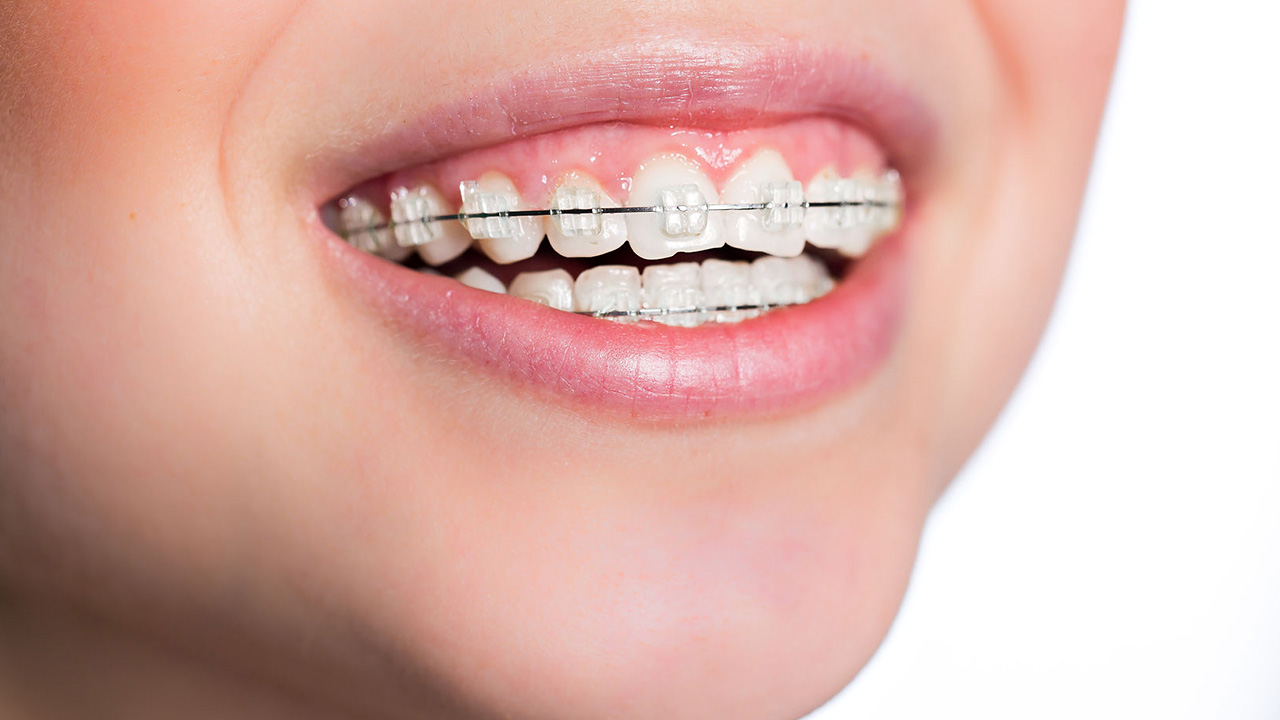Introduction
Braces are dental appliances used to correct crooked or misaligned teeth. With crooked teeth, a smile can often look lopsided or unpleasant. Having straight teeth will mean having an aesthetic smile. Furthermore, functions like chewing and eating will be improved. Cleaning straightened teeth will also become much easier.
Braces, when placed may have a period of discomfort when the teeth are moved. Food may also trap more easily and therefore, more focus on oral hygiene is required to reduce the start of tooth decay and gum disease.
We offer traditional metal braces, ceramic braces and clear aligner trays. (e.g. E-Cligner and Invisalign)

- Mismatched jaw profiles
- Crooked teeth or teeth with irregular spaces
- Protruding teeth
- Inability to have a proper bite
Benefits
- Improved Aesthetics
With straighter teeth, a patient has a nicer smile and more pleasant facial profile. - Improved Function
When the teeth are well-aligned, this enables our patients to be able to eat more efficiently. Food also will tend to have a lesser tendency to get trapped between teeth. - Improved self-esteem
With a nicer smile and improved function of the teeth, patients will tend to be able to act more confidently when interacting socially. - Improved cleaning ability
The cleaning and brushing of teeth will be improved as there are no more misaligned teeth to trap food and lesser difficult spots to clean. This in turn leads to an improvement in the overall hygiene of teeth and gums.
Treatment Process
- Initial Consult and Assessment
A full examination will be performed and initial assement will be made. Diagnostic xrays and impressions for study models will be done to aid in an accurate treatment plan. Photos will also be taken to record the start of treatment - Explanation of analysis and treatment proposal
After the planning has been done, a second treatment explanation procedure and proposal of treatment will be given in much greater detail. - Pre-Braces treatment
Sometimes, teeth may need to be extracted or jaw bone expanded prior to the actual placement of the braces brackets. - Placement of Braces brackets
This may be placed in separate visits and may involve 2-3 visits. Regular Reviews
The dentist will review the patient at regular intervals to change wires, adjust brackets or take note of any issues which can be rectified on the spot.It is very important to attend the reviews as infrequent or irregular reviews can lead to: extended treatment time, teeth decay or gum disease. If the patient is unable to keep the teeth clean, a decision may be made to terminate the treatment early so that the teeth do not develop decay and/or gum disease.
- Removal of Braces
When it is deemed that the teeth are in a satisfactory position, the decision will be made to remove the braces. - Impression for retainers
The most important step is the wearing of retainers. It is not uncommon for teeth to move after braces treatment. To reduce this occurrence, the dentist will issue a set of retainers, intstructions will also be given.
FAQs
- Is wearing braces a necessary treatment?
Braces are normally worn to correct misaligned teeth. If you have a mislaignment that you want to correct, if you find speech difficult due to the position of certain teeth, if you find it difficult to eat and clean your teeth, you may need braces. When can braces treatment start?
In the majority of cases, treatment can start from when the permanent teeth are all out, which is usually between the ages of 11-13yo.Some cases may require early intervention to condition the jaws to grow, or spaces to be retained. This early internvention is especially so in children with mismatched jaw proportions. This can occur during ages of 7-11yo.
Therefore it is important to see and ask a dentist who is able to identify the nedd for braces at an early age.
- How long does treatment normally take?
Treatment usually takes a minimum of 24 months. The treatment time may vary due to many reasons and is only a rough estimation. Reasons like infrequent review appointments, complex movement of teeth, dense bone structure, need for surgery etc may all play a part in the delay of treatment completion. Are braces only for teenagers? Am I too old for braces?
Although a majority of braces treatment start during the start of the teenage years, there is no real age limit to when you can start wearing braces. Although it must be said that growth potential in adoloescents is greatest at that time.Reasons like, but not limited to, pre-existing dental conditions, excessive tooth wear, presence of dental implants may lead to a patient not being an ideal candidate for braces treatment. This is best discussed with the braces dentist.
Can I not wear retainers after treatment completion?
This is not advisable as retention from retainers are an integral part of braces treatment. It is very not uncommon to have tooth movement after braces treatment is completed.Once teeth have moved, and there is requirement to straighten the teeth again, we may have to start corrective retreatment.
I don’t like to see metal on my teeth. Are there options?
There are a few other alternatives to metal braces. We offer ceramic (tooth coloured) braces, and clear aligner trays.There are pros and cons to the options, and not everyone is suitable for the options. This can be discussed during the consultation appointment.
Contact Us
If you have any query about our clinic or treatments, do drop us an email, and we will get right back to you!
